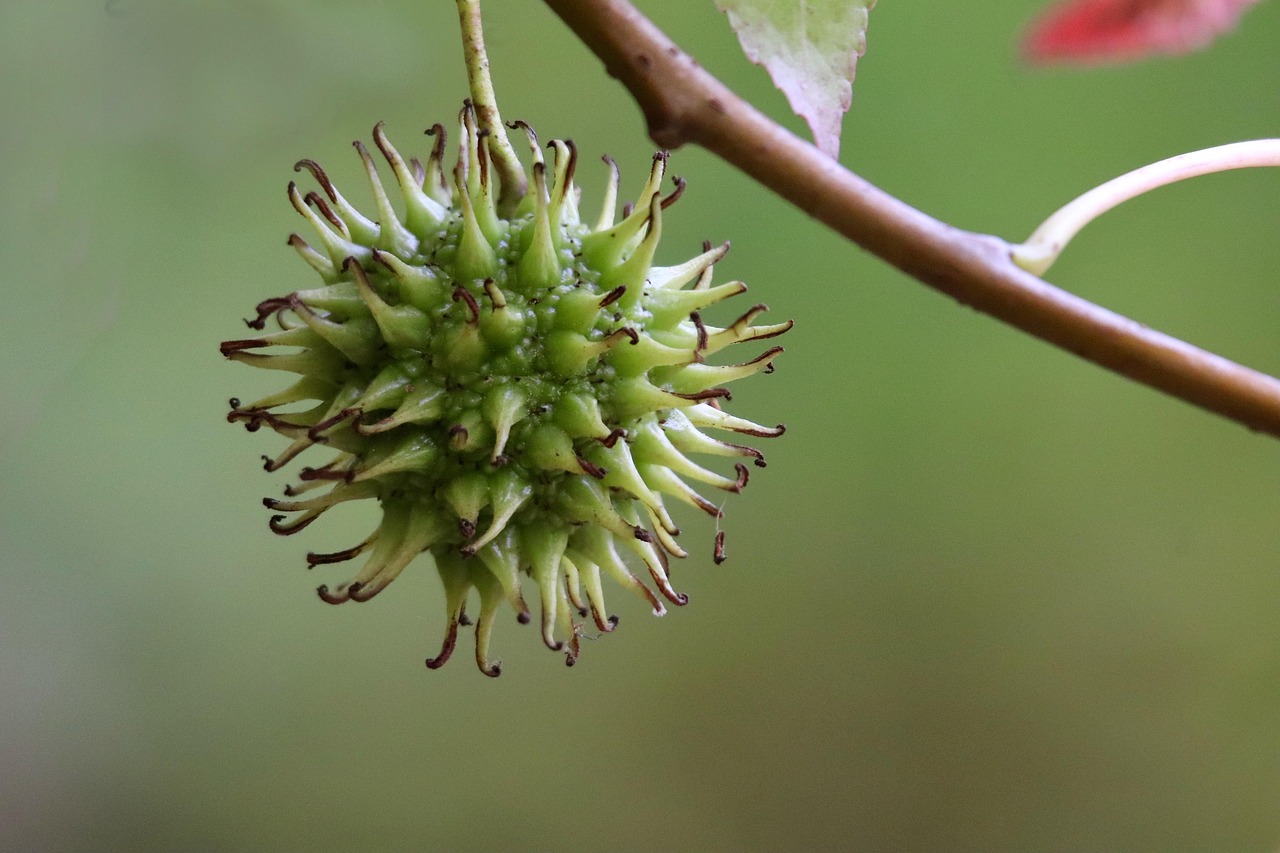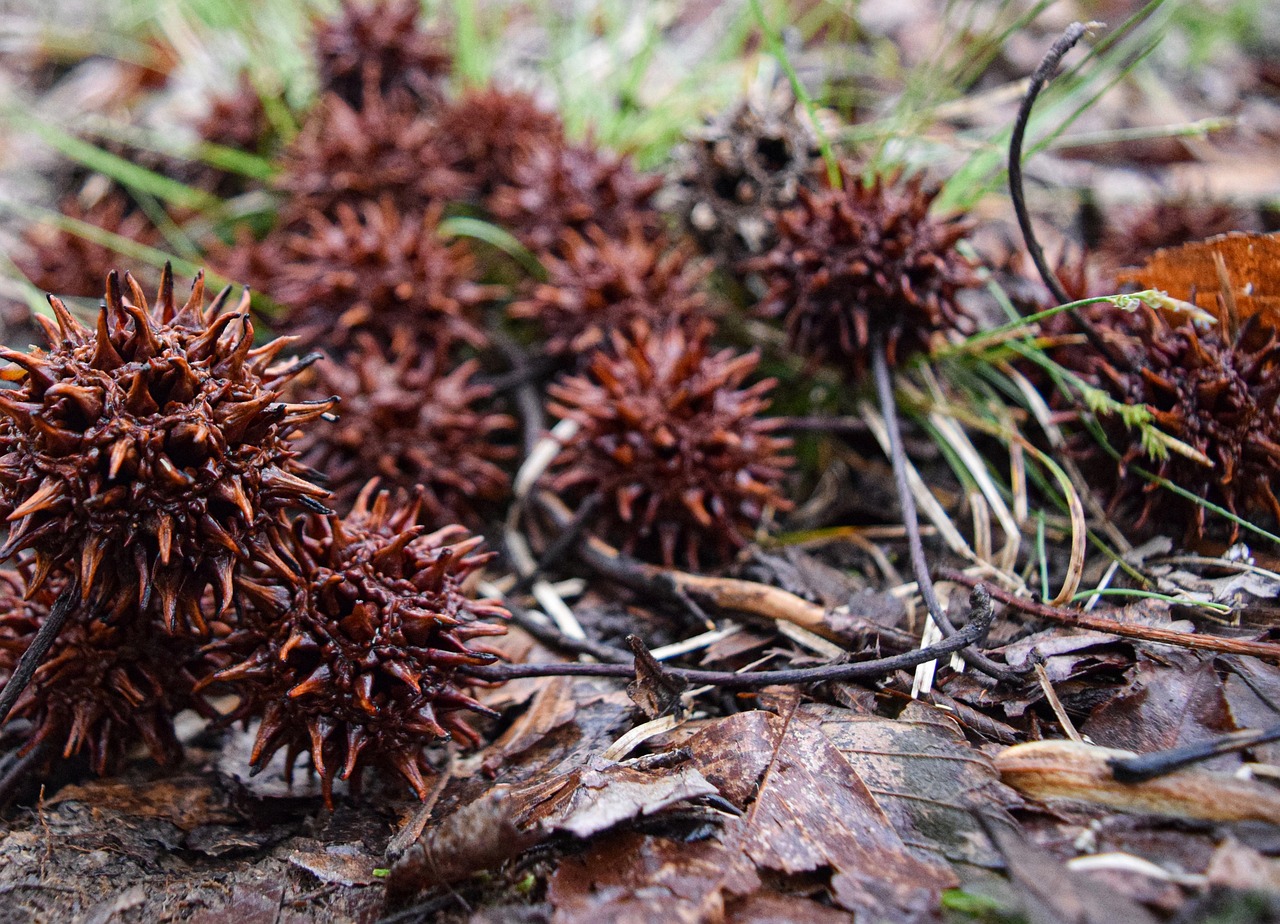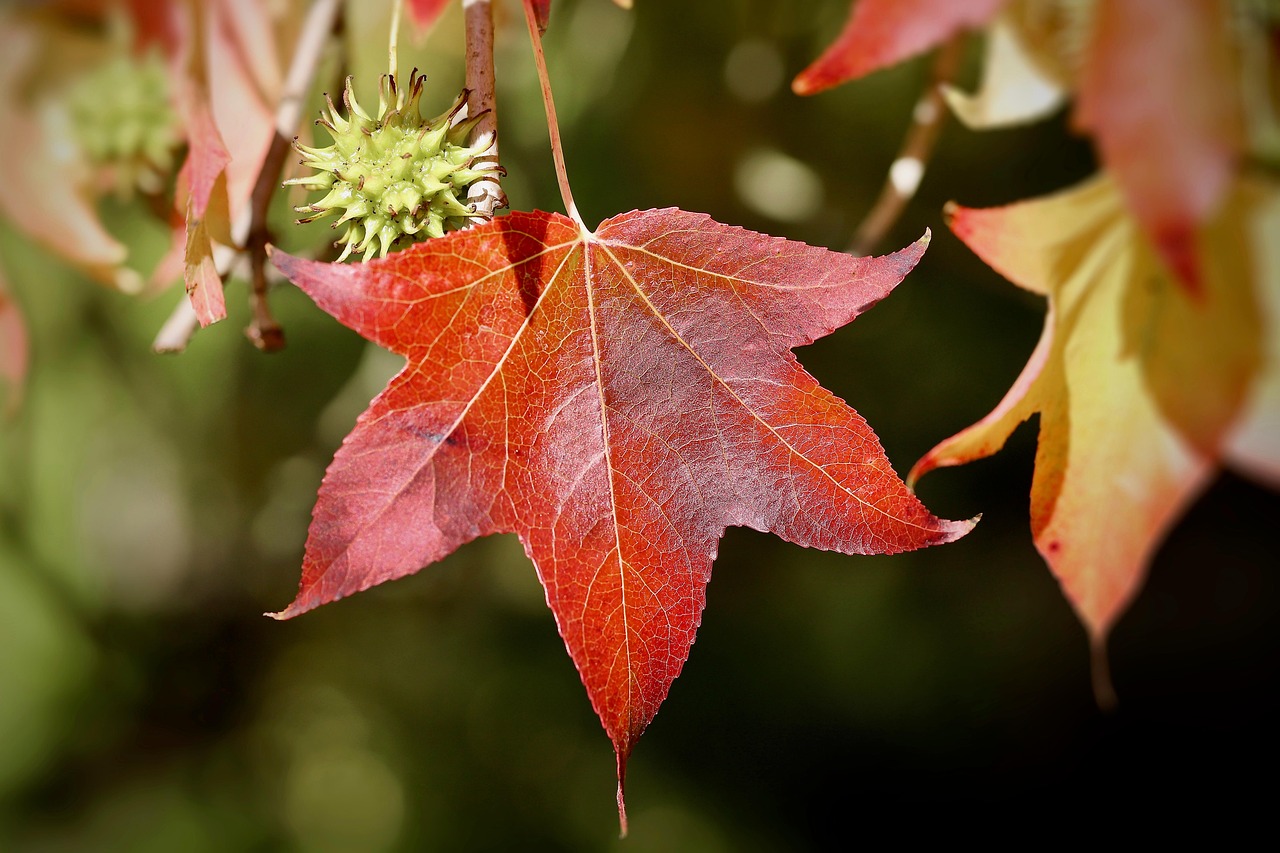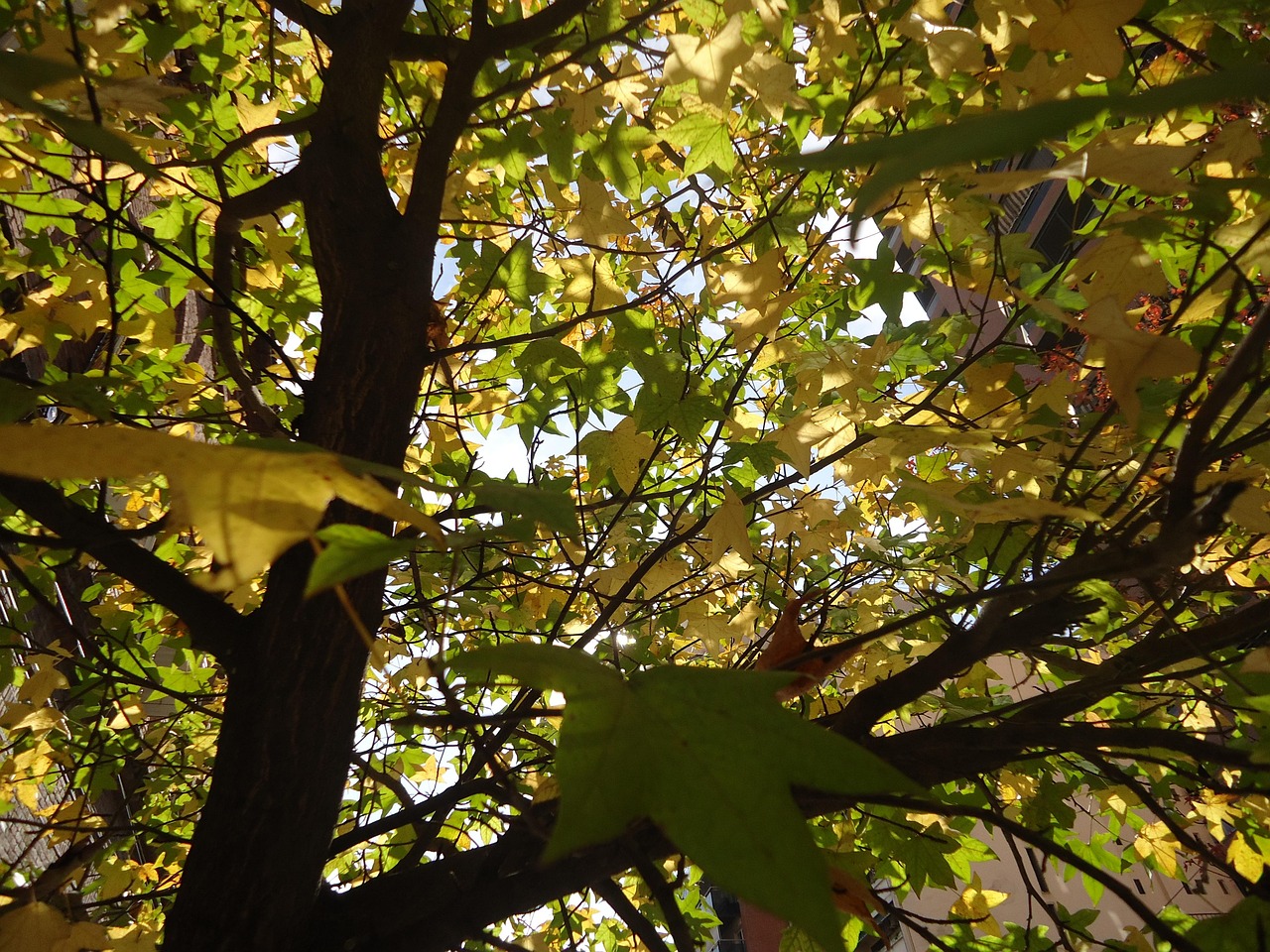The Sweetgum tree can be grown from a seed pod by collecting mature pods, soaking the seeds overnight, and planting them in well-drained soil. Ensure they receive adequate sunlight and water for optimal growth.
Understanding the Sweetgum Tree

The Sweetgum tree, scientifically known as Liquidambar styraciflua, is a deciduous tree native to the eastern United States. Known for its star-shaped leaves and distinctive spiky seed pods, this tree adds beauty to landscapes with its vibrant fall colors. The leaves can turn shades of yellow, orange, and red, making it a popular choice for homeowners and landscapers alike.
Sweetgum trees can grow quite tall, reaching heights of 60 to 100 feet with a spread of 30 to 50 feet. They thrive in various soil types but prefer moist, well-drained conditions. Their rapid growth and unique foliage make them an attractive addition to any garden or park.
Seed Pods: Nature’s Gift
The seed pods of the Sweetgum tree are round and spiky, resembling small green balls. These pods contain numerous seeds that can be harvested once they mature and turn brown. Collecting these pods is the first step in growing your own Sweetgum tree from seed.
| Seed Pod Characteristics | Description |
|---|---|
| Shape | Round and spiky |
| Color | Green when immature, brown when mature |
| Seed Count | Contains multiple seeds |
Collecting and Preparing Seeds
To successfully grow a Sweetgum tree from a seed pod, you must first gather the pods in late fall or early winter. Look for those that have turned brown but are not yet cracked open. This indicates that the seeds inside are mature. Once collected, it’s essential to prepare the seeds for planting.
Start by soaking the seeds in water overnight to help soften their hard outer shell. This process, known as stratification, mimics the natural conditions that seeds experience in the wild. It enhances germination rates and prepares them for planting.
Choosing the Right Planting Location
When selecting a site for your Sweetgum tree, consider a few important factors. The tree requires plenty of sunlight to thrive. Aim for a location that receives at least six hours of direct sunlight each day. Additionally, the soil should be well-drained to prevent root rot.
Sweetgum trees prefer slightly acidic to neutral pH levels in the soil. Conducting a soil test can help you determine if your chosen location meets these conditions. If necessary, you can amend the soil with organic matter or fertilizers to create an ideal growing environment.
Once you have prepared your seeds and chosen the right location, you are ready to plant your Sweetgum seeds and nurture them into beautiful trees.
Planting Sweetgum Seeds
With your seeds stratified and location selected, the next step is planting the Sweetgum seeds. This process is crucial for ensuring successful germination and growth. Below, you will find a step-by-step guide to help you through this important phase.
Step-by-Step Planting Guide
- Prepare the Soil: Loosen the soil in your chosen location. This helps create an environment that allows the roots to penetrate easily. Remove any weeds or debris that may compete with your seedlings.
- Plant the Seeds: Sow the seeds about 1/2 inch deep. Space them approximately 12 inches apart to ensure they have enough room to grow.
- Water Gently: After planting, water the area gently. This will help settle the soil around the seeds without washing them away.
- Mulch: Apply a thin layer of mulch over the planting area. This helps retain moisture and suppress weeds as the seeds begin to germinate.
- Monitor: Keep an eye on the moisture level in the soil. It should remain consistently damp but not soggy.
Germination Process
The germination process for Sweetgum seeds typically takes between 2 to 8 weeks, depending on environmental conditions. During this period, it is essential to provide the right care and attention to support seedling growth.
Care Tips for Germination
- Sunlight: Ensure that the seeds receive adequate sunlight. Once they sprout, they should get full sun exposure for at least six hours a day.
- Watering: Regularly check the soil’s moisture level. Water the seedlings when the top inch of soil feels dry. Avoid overwatering, which can lead to root rot.
- Pest Control: Watch for pests that may harm young seedlings. Common pests include aphids and caterpillars. Use insecticidal soap or neem oil as needed.
Transplanting Seedlings

Once your Sweetgum seedlings have grown strong enough, usually when they are about 6 to 12 inches tall, it is time to consider transplanting them if they were started in a confined space or indoors. Transplanting helps ensure they have enough space to grow to their full potential.
Transplanting Steps
- Select Timing: Choose a cool, cloudy day or transplant in the late afternoon to minimize shock from heat and sunlight.
- Prepare New Site: Ensure your new planting site is ready with well-drained soil and ample sunlight.
- Dig Carefully: Using a spade, dig around the seedling to preserve as much of the root system as possible. Be cautious not to damage the roots while lifting them out of the ground.
- Replant: Place the seedling in its new hole, ensuring it is at the same depth as it was previously growing. Backfill with soil and pack it down gently.
- Water Thoroughly: After transplanting, water the seedling well to help it settle into its new environment.
Ongoing Care for Sweetgum Trees
After successfully planting and transplanting your Sweetgum tree, ongoing care is vital for its growth and health. Below are some essential care tips to follow as your tree matures.
- Fertilization: Fertilize your Sweetgum tree once a year in early spring with a balanced fertilizer to promote healthy growth.
- Pruning: Prune your tree during its dormant season to shape it and remove any dead or diseased branches.
- Pest Management: Continue monitoring for pests throughout its growth. Early intervention is key to preventing infestations.
- Irrigation: During dry spells, make sure your tree receives adequate water, especially in its first few years of growth.
Caring for a Sweetgum tree requires patience and commitment. With the right attention, these trees can thrive and become a stunning part of your landscape for many years.
Common Challenges When Growing Sweetgum Trees

While Sweetgum trees are generally resilient and adaptable, they can face several challenges as they grow. Understanding these potential issues can help you take proactive measures to ensure your tree thrives. Below are some common challenges and how to address them.
Weather Sensitivity
Sweetgum trees can be sensitive to extreme weather conditions. They may struggle during prolonged droughts or severe storms. Here are some tips to mitigate weather-related challenges:
- Watering During Drought: During dry spells, increase your watering frequency to ensure the roots remain hydrated.
- Wind Protection: If you live in an area prone to high winds, consider planting your Sweetgum tree near a natural windbreak, such as a fence or other trees.
Pest Issues
Like many other trees, Sweetgum trees can be susceptible to various pests. The most common pests include:
- Aphids: These small insects can weaken the tree by sucking sap. Regularly check for signs of infestation and treat with insecticidal soap if necessary.
- Caterpillars: Some caterpillars may feed on the leaves. Handpicking or using organic pesticides can help manage these pests.
- Scale Insects: Scale can appear as small bumps on branches. They can be controlled by applying horticultural oil during the dormant season.
Disease Management
Sweetgum trees can also be affected by various diseases that may compromise their health. Some common diseases include:
- Leaf Spot: This fungal infection causes dark spots on the leaves. Ensure good air circulation around the tree and avoid overhead watering to minimize leaf wetness.
- Canker Diseases: Cankers cause sunken areas on the bark. Prune infected branches and keep tools sterilized to prevent spreading.
- Root Rot: This occurs in poorly drained soil. Ensure proper drainage and avoid overwatering to prevent this condition.
Environmental Considerations
Sweetgum trees play an essential role in their ecosystems. Understanding their environmental needs and benefits can help you provide the best care while contributing positively to local biodiversity.
Soil and Nutrient Requirements
Sweetgum trees thrive in rich, well-drained soils. Here are some considerations regarding soil health:
- Soil Testing: Conduct a soil test every few years to check pH and nutrient levels. This information will guide you in amending the soil appropriately.
- Organic Matter: Adding organic matter, such as compost, can enhance soil structure and fertility, promoting healthier growth.
Biodiversity and Wildlife Support
Planting Sweetgum trees can also benefit local wildlife. The tree provides food and habitat for various species:
- Birds: The seeds from Sweetgum pods attract birds, providing them with nourishment.
- Insects: Healthy Sweetgum trees support various insects, which in turn attract pollinators like bees.
- Mammals: Small mammals may feed on fallen seeds, contributing to the local food web.
Harvesting Sweetgum Seed Pods
If you desire to propagate more Sweetgum trees in the future, understanding how to harvest seed pods is essential. Collecting seed pods at the right time ensures that you have viable seeds for planting.
Harvesting Process
- Timing: Harvest the seed pods when they are brown and spiky, typically in late fall or early winter.
- Collection: Use pruning shears to cut the seed pods from the branches carefully. Gather them in a container to avoid damage.
- Storage: Store the collected pods in a cool, dry place until you’re ready to plant them. Ensure they are kept away from moisture to prevent mold growth.
By being mindful of these challenges and best practices, you can successfully grow and maintain a healthy Sweetgum tree, contributing beauty and biodiversity to your landscape.
Additional Benefits of Sweetgum Trees

In addition to their aesthetic appeal and ecological value, Sweetgum trees offer several other benefits that make them an excellent choice for landscaping and environmental conservation. Understanding these advantages can further motivate you to cultivate and care for these trees.
Air Quality Improvement
Sweetgum trees, like many other trees, contribute positively to air quality. They play a crucial role in:
- Carbon Dioxide Absorption: Trees absorb carbon dioxide during photosynthesis, helping to mitigate climate change by reducing greenhouse gases.
- Oxygen Production: In the process of photosynthesis, Sweetgum trees release oxygen, which is essential for human and animal life.
- Pollutant Filtration: The foliage captures dust, smoke, and other pollutants, improving air quality in urban and suburban areas.
Soil Erosion Prevention
The root systems of Sweetgum trees help anchor the soil, preventing erosion. This is especially important in areas prone to heavy rainfall or on slopes where soil can wash away easily. By planting Sweetgum trees, you can contribute to:
- Soil Stability: Their extensive root systems stabilize the soil, reducing runoff and protecting waterways from sedimentation.
- Organic Matter Addition: As leaves fall and decompose, they enrich the soil with organic matter, promoting a healthier ecosystem.
Landscape Diversity
Incorporating Sweetgum trees into your landscape can enhance biodiversity. They provide habitat and food for various wildlife, including birds, insects, and small mammals. Additionally, they can complement other plantings:
- Varied Canopy Structure: Sweetgum trees can grow tall and wide, adding vertical diversity to your landscape.
- Aesthetic Variety: With their star-shaped leaves and beautiful fall colors, they enhance the visual appeal of gardens and parks.
Final Thoughts
Growing a Sweetgum tree from a seed pod is a rewarding endeavor that provides numerous benefits, both for you and the environment. From contributing to air quality improvement to fostering biodiversity, Sweetgum trees have much to offer. With proper care and attention, you can cultivate a beautiful tree that not only enhances your landscape but also supports local ecosystems.
By understanding the planting process, ongoing care requirements, and potential challenges, you are well-equipped to nurture a healthy Sweetgum tree. Remember to monitor its growth, manage pests and diseases effectively, and enjoy the journey of watching your tree flourish over the years.
As you embark on this journey, consider sharing your experiences with others. Whether through community gardening groups or social media platforms, spreading knowledge about growing Sweetgum trees can inspire more people to appreciate the beauty and ecological importance of these magnificent trees.
In conclusion, the Sweetgum tree stands as a testament to nature’s resilience and beauty. By growing one from a seed pod, you not only create a lasting legacy for future generations but also engage in a fulfilling gardening experience. Happy planting!
